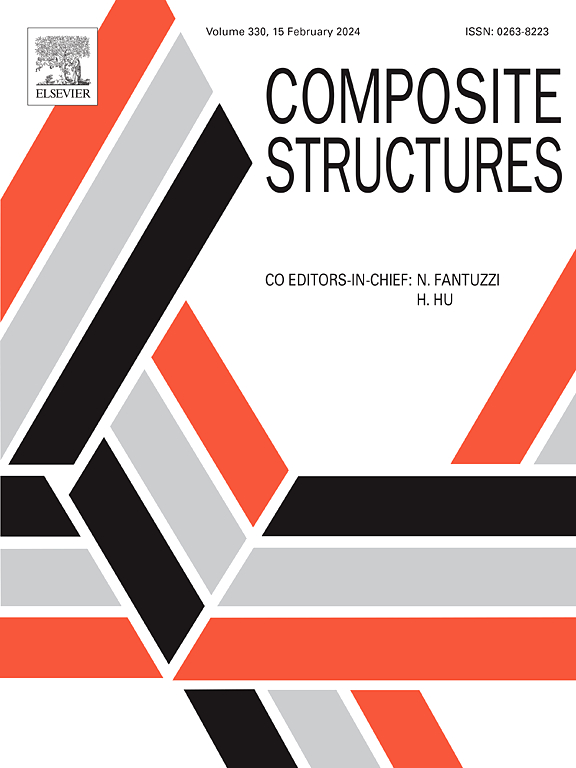通过几何非线性有限元解的精确高效微分实现最佳层压角
IF 6.3
2区 材料科学
Q1 MATERIALS SCIENCE, COMPOSITES
引用次数: 0
摘要
层压板可以调整层中纤维的取向,以获得所需的机械响应。在有限变形和屈曲的情况下,最佳层叠设计是一项具有挑战性的任务。对于指定的设计,需要进行增量迭代有限元分析来计算结构响应。基于梯度的方法通常是最有效的优化工具。其瓶颈在于梯度评估,通常只能通过有限差分法近似实现。本文展示了如何计算几何非线性有限元解相对于堆叠序列的精确梯度。该策略依赖于与指定位移相对应的控制平衡点的非线性离散方程的隐式微分。这样,无论设计变量的数量有多少,都能通过已因式分解的切线刚度矩阵和涉及离散内力矢量偏导数的标量乘积,以精确高效的方式计算出单个快速求解线性系统的载荷系数梯度。一些应用证明了这种方法的高效性和稳健性。本文章由计算机程序翻译,如有差异,请以英文原文为准。
Optimal lamination angles via exact and efficient differentiation of the geometrically nonlinear finite element solution
Laminates allow tailoring the fiber orientations in the layers to obtain the desired mechanical response. The optimal layup design is a challenging task in the case of finite deformations and buckling. For an assigned design, an incremental-iterative finite element analysis is needed to compute the structural response. Gradient-based methods are very often the most efficient optimization tools. Their bottleneck is the gradient evaluation, generally possible only approximately by finite differences. This article shows how to compute the exact gradient of the geometrically nonlinear finite element solution with respect to the stacking sequence. The strategy relies on the implicit differentiation of the nonlinear discrete equations of a control equilibrium point corresponding to an assigned displacement. This provides the load factor gradient by a single fast-solution linear system with the already factorized tangent stiffness matrix, regardless of the number of design variables, and scalar products involving the partial derivatives of the discrete internal force vector, calculated in an exact and efficient way. Several applications demonstrate the efficiency and robustness of the approach.
求助全文
通过发布文献求助,成功后即可免费获取论文全文。
去求助
来源期刊

Composite Structures
工程技术-材料科学:复合
CiteScore
12.00
自引率
12.70%
发文量
1246
审稿时长
78 days
期刊介绍:
The past few decades have seen outstanding advances in the use of composite materials in structural applications. There can be little doubt that, within engineering circles, composites have revolutionised traditional design concepts and made possible an unparalleled range of new and exciting possibilities as viable materials for construction. Composite Structures, an International Journal, disseminates knowledge between users, manufacturers, designers and researchers involved in structures or structural components manufactured using composite materials.
The journal publishes papers which contribute to knowledge in the use of composite materials in engineering structures. Papers deal with design, research and development studies, experimental investigations, theoretical analysis and fabrication techniques relevant to the application of composites in load-bearing components for assemblies, ranging from individual components such as plates and shells to complete composite structures.
 求助内容:
求助内容: 应助结果提醒方式:
应助结果提醒方式:


